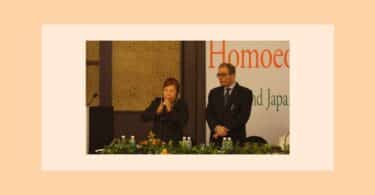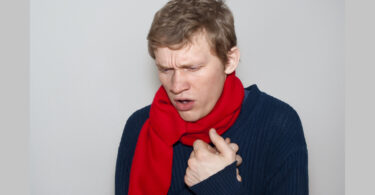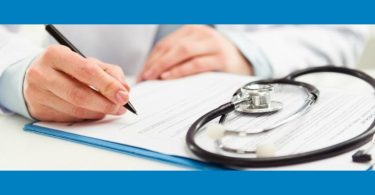Prophylaxis is, by definition, the prevention of, or protective treatment for, disease. The concept is one that is not entirely understood or appreciated by the many practitioners who think they are practicing in accordance with Dr. Hahnemann’s system of medicine.
Many deny the concept of using remedies to prevent disease, and where this concept is accepted, it is poorly understood. The root of the problem lies in the sole emphasis on “homeopathic” prescribing, that is, prescribing on the basis of symptoms and ignoring the other treatment approaches offered by Hahnemann’s system. Looking to prevent a disease that has not yet created any symptoms in a healthy body is, by definition, outside the realm of homeopathic prescribing and, thus, the view that prophylaxis is not a part of homeopathy is valid.
To the extent that homeopaths approach prophylaxis, it is indirectly, considering that homeopathic treatment enhances the functioning of the immune system and assists in fighting off bacteria and viruses. This approach also has validity.
However, direct medical prevention is a valid part of any healthcare system and has a very long history in Heilkunst. In 1801, Dr. Samuel Hahnemann wrote about his findings on the remedy Belladonna. He claimed that when uninfected family members were given Belladonna during a scarlet fever epidemic, they were completely protected. From this he derived the principle that what will cure a disease will also prevent it.
Our homeopathic literature is replete with the subsequent cases and examples of the efficacy of using remedies homeopathically, and homotonically, for protection against specific infectious diseases, such as influenza, measles, smallpox, diphtheria, whooping cough, cholera and malaria in humans, and anthrax and rabies in animals.
Dr. Hahnemann called prevention the “Royal Road” to health, which has two aspects:
– regimen
– medicine
Hahnemann began with regimen as the first step in Heilkunst treatment, enhancing the immune system and state of health of patients so they could be resistant in the first place.
“I must feel for myself what is useful for me and how much of it; if I do not know it, no one else does. Therefore do not think badly of me, brother, if I am somewhat prejudiced against those universal rules of diet meant to apply to sensible people.
For, is not every man’s stomach as peculiar to him as his foot, which another man’s shoe does not and cannot fit? [Hahnemann lays down as the] only infallible guide to salvation in diet: moderation and attention to the needs of the individual constitution under any given conditions… Moderation, strictness, not a moderation influenced by a spoilt and pampered palate, is the supreme physical virtue without which we cannot be healthy or happy. [One more thing to be added is] cheerfulness and control of all passions, since passions are lowering and make us susceptible to disease.” (Haehl, Vol. I, p. 51-52)
“In laying out new towns, no houses more than two stories high should be allowed; every street should be built at least twenty paces wide and perfectly straight, so that air could blow freely through it, and behind each house… there should be a yard and a little garden, running the width of the house and at least twice its length… and this would be such an effective method of suppressing infectious diseases and of improving the general health, that most of the rules of precaution against epidemics which I have given above would thereby become to a great extent superfluous.” (Haehl, Vol. I, p. 58)
Hahnemann’s second step was medicine. He says in Cure and Prevention of Scarlet Fever (1801), an article that he explicitly references in the Organon:
“Who can deny that the perfect prevention of the infection from this devastating scourge, and the discovery of a means whereby this divine aim may be surely attained, would offer infinite advantages over any other mode of treatment, be it of the most incomparable kind so ever?
The remedy capable of maintaining the healthy uninfectable by the miasm of scarlatina, I was so fortunate as to discover. I found also that the same remedy given at the period when the symptoms indicative of the invasion of the disease occurs, stifles the fever in its very birth…” (original italics) (Lesser Writings, p. 377)
Essentially, Hahnemann knew a given disease affected every person in a similar way. Once he had the symptoms of a few cases, he made the intuitive and rational conclusion that it would both destroy the disease in those who had it but who as yet had no symptoms, and prevent it in those who did not yet have the symptoms, as in the earlier example of scarlet fever and Belladonna.
“In like manner there cannot be any prophylactic of hydrophobia that does not prove itself to be at the same time a really efficacious remedy for the fully developed hydrophobia. Let us begin at this starting point. Let a remedy be discovered that has already cured at least ten persons, really affected with hydrophobia, without exception and permanently; this will, this must be, likewise the best prophylactic; but any substance that cannot stand this test, can never, in the eyes of reason and experience, be considered as a trustworthy prophylactic.” Lesser Writings
How can it be that a remedy, given in the absence of disease, and particularly absent any of the symptoms necessary for homeopathic prescribing, confers immunity?
The answer lies in Hahnemann’s writings on provings, and in particular in his assertions based on experience that provings actually strengthen a person’s life force.
fn to Aph. 141:
“Let him not imagine that such small illnesses due to proving medicines are generally detrimental to his health. Experience teaches, on the contrary, that the organism of the prover becomes, due to the various attacks on the healthy condition, only the more practiced in warding off everything from the outer world that is inimical to his body.
Along with all artificial and natural disease malignities, and also more seasoned against everything that is detrimental by means of such moderate self-provings with medicines. His health becomes more invariable; he becomes more robust, as all experience teaches. How is this possible, other than that a proving reinforces the immune system? A proving is, in effect, a form of immunization against a disease agent or wesen.
A remedy can be given in the absence of symptoms in any disease, but only because the symptoms were taken from the initial few cases (genus epidemicus), which is contrary to the “individualizing” that homeopathy normally requires.
How does this work?
Hahnemann said that the wesen of an epidemic disease more or less hits everyone the same way because of its nature.
This is a key term used by Hahnemann and one that has been lost as a result of previous wrong translations of Hahnemann’s writings. The term Wesen is difficult to translate into English because it has many meanings: genius, essence, substance, creature, living thing, nature or entity.
A Wesen is a dynamic entity that permeates the whole of something. It cannot be divided from that which it permeates (except conceptually). It has no mass, but is energetic in nature. It is similar to the term “genius” used by the romantic philosophers of the 19th Century, such as Coleridge, as well as by contributors to our Materia Medica. (Dynamic Legacy, Decker/Verspoor)
Hahnemann did not come up with the idea of using nosodes and isodes (though there is evidence that he knew of it and even used a form of Psorinum), yet he accepted it as being consistent with the underlying principles of his system. The charge of “isopathicist” falls on deaf ears when Hahnemann himself explains that the potentization takes any substance from idem, to the closest similar.
379.1 …for it does not remain idem [the same]; even if the prepared itch substance should be given to the same patient from whom it was taken, it would not remain idem (the same), as it could only be useful to him in a potentized state, since crude itch substance which he already has on his body as an idem is without effect on him.
But the dynamization or potentizing changes it and modifies it; just as gold leaf after potentizing is no more inactive crude gold leaf in the human body, but in every stage of potentization it is more and more modified and changed. (Chronic Diseases)
Hahnemann himself gave Sulphur to almost all patients in his later years, not because they were exhibiting symptoms of Sulphur, but on the knowledge that they had the underlying Psoric miasm. For Hahnemann, Sulphur represented the “King of Psora.” (Rima Handley, In Search of the Later Hahneman)
This gives us the principle and foundation for homo-prophylaxis, which is more extensive than homeoprophylaxis and its genus epidemicus.
Homo-prophylaxis is prescribing the closest similar to the disease, and is used preventively.
In his later years, Hahnemann started to switch from using Sulphur to Psorinum – and he accepted nosodes and isodes as being a valid application of the Law of Similars.
At the same time (1830s), Hering and Lux were working with nosodes and isodes, prescribing not based on symptoms, but on cause.
“A nosode rejected by the old school, and by the majority of the new, in spite of its being a remedy which bears out our theory, and one which has proved of the utmost use in practice. It has not yet been proved, but the frequent use made of it and the verification of the toxin symptoms by some of our best practitioners justifies its reception.
The first preparation was made according to Hering’s propositions (laid down in Staph’s Archives, 1830) by Dr. G. A. Weber, and applied with the most astonishing success in the cattle plaque. He cured every case with it, and also cured men poisoned by the contagion. His report, a small treatise of 114 pages, was published in 1836 by Reclam, Leipsic. No notice was taken of it.
Only the talented Dr. P. Dufresne, the founder of the Bibliothèque Homoeopathique, of Geneva, used it and prevented the further murderous spread of the disease, in a flock of sheep (among which it is always more fatal than among other domestic animals), and cured the shepherds as well (Biblioth. Homoeop. de Genève, January and February, 1837).
The discovery of the bacteria and their incredibly rapid propagation seemed to be of much more importance than the cure of cattle, and the loss of millions of dollars by this disease.
In 1842 France sustained a loss of over seven millions of francs, [seven million francs] or [several millions of francs] and every year a small district of Germany had a loss of sixty thousand thalers from the cattle plague; in Siberia in 1785, 100,000 horses died with it; in 1800, one small district lost 27,000 horses.
Radiate heat, proposed scores of years ago for other zymotic diseases by Hering, was discovered, in a very ingenious way, by Pasteur, to prevent the increase of bacteria. Now the heat (as it has done in hydrophobia), and the nosode may suffice to cure every case.
Dr. Hering says, “Homeopathic practitioners of the greatest integrity, and trustworthy beyond a doubt, long ago cured splenic fever in cattle, flocks of sheep and their shepherds by Anthracinum, an alcoholic tincture made from the blood of a bacteric spleen. Of course, the alcohol killed the infusoria, but what remained dissolved therein cured the disease in animals and men.” H.C. Allen’s Materia Medica with the Nosodes, on Anthracinum.
Based on Hahnemann’s insights into tonic diseases and their invariable wesen, and on the principle derived therefrom, namely that for a disease of constant nature (wesen) there is a curative agent of constant nature, we can provide a safe, effective and easily applied system of disease prevention.
This can be done even in the face of new, threatening diseases, based on the principles related to the creation of nosodes from the characteristic discharge of the initial victims of the disease, or based on an isode made from the disease agent isolated by more modern laboratory methods.
A recent example of the application of homoprophylaxis was the successful immunization of a large part of the Cuban population against a yearly epidemic of Leptospirosis, an infectious disease, when previous repeated allopathic vaccinations had failed.
We don’t have to wait for symptoms to figure out the pathic disease, we can give the nosode or the isode for the tonic disease with Hahnemann’s blessing.
We can prescribe on cause for, or potential exposure to, such diseases as dengue, anthrax, typhoid, hepatitis, malaria, influenza, etc., and preventively use the nosode.
And it is the same with vaccinations – if the MMR vaccination causes a disturbance, use the MMR isode to cure it. You don’t need to look, or wait, for symptoms.
Hahnemann right at the very start identified two types of disease and the order in which they should be treated – the primary constant disease first, and the variable secondary disease next.
“… if they cannot be referred to some primary disease which is constant in its character, they must each be regarded as peculiar diseases, and a medicine which in its pure effects on the healthy body shows symptoms similar to those of the case before us, must be administered. Lesser Writings
Treating the primary disease cannot be accomplished with homeo-prophylaxis, but is the domain of homo-prophylaxis.
Our own clinic, in conjunction with perhaps 70+ clinics in the US and Canada, have offered patients and the public homoprophylaxis during influenza season. In eight years our success rate in prevention has been 99.4%. We use, logically, the influenza virus for that season, one dose of a 200C early in October, and a second dose of the 200C in January.We include regimenal counseling, per Hahnemann’s wishes.
Treatment examples of Homeo-and Homo-prophylaxis:
Disease Homoprophylaxis Homeoprophylaxis
Chickenpox Varicellinum Rhus-t, Puls, Ant-c, Mez, etc.
Whooping cough Pertussinum Drosera, Rumex, Ipec, etc.
Influenza Influenzinum Gels, Bry, Bapt, Eup-p, etc.
Heck, let’s simplify it, and just use homoprophylaxis!
H1N1 H1N1
H5N1 H5N1
Measles Morbilinum
Mumps Parotidinum
Smallpox Variolinum
Scarlet fever Scarletinum
E-coli E-coli
Yellow fever Yellow fever
Anthrax Anthracinum
Hepatitis A Hepatitis A
Dengue Fever Dengue Fever
Leptospirosis Leptospirosis
West Nile Virus West Nile Virus
MMR vaccine MMR vaccine
Smallpox vaccine Vaccinotoxinum
The list is endless… as are the possibilities!
———————————————————-
Patty Smith-Verspoor DMH, DVH, BSEd.
Patty Smith has been interested in homeopathy since her first introduction in 1977. When her father was admitted to Hahnemann Hospital in Philadelphia for a triple coronary bypass, she already was suggesting alternative treatment. Following her father’s surgery there was a medical snafu, putting him into a coma for five months before he died at Christmas, 1980. With more determination, and after witnessing homeopathic miracles in her home (ex-husband’s finger almost being severed by a lawnmower but healing beautifully; burned hand when she put the potholder on her right hand and removed the Thanksgiving turkey with her left; food poisoning, etc.) she began her studies in earnest.
In 1995 she moved from New Jersey to Ottawa, Canada after being offered a partnership in the Norsana Academy Clinic, sharing the space with Rudolf Verspoor (whom she subsequently married). She served as the Dean of Admissions and Student Affairs for the British Institute of Homeopathy (Canada) for more than five years, working with Rudi to develop the advanced practitioner programs offered initially in Canada, and now worldwide. She was a co-founder of the National United Professional Association of Trained Homeopaths (NUPATH) and served on its Board of Directors for ten years. She also is a founding member of the Canadian and International Heilkunst Associations.
Patty co-authored Autism: The Journey Back, Recovering the Self Through Heilkunst with Rudi Verspoor, and worked with him on Homeopathy Renewed. She has contributed many articles to newspapers, and wholistic and homeopathic journals and magazines in the United States and Canada. She is editor of the Heilkunst Journal, a publication of the Hahnemann Center for Heilkunst, and The Whole Story, the newsletter of the Hahnemann Clinic. She currently is working on A Patient’s Guide to Heilkunst and A Patient’s Guide to Vaccinations, and Homeo- and Homo-prophylaxis.







can you just tell me where i find infectious disease and hahnemaniann
concept